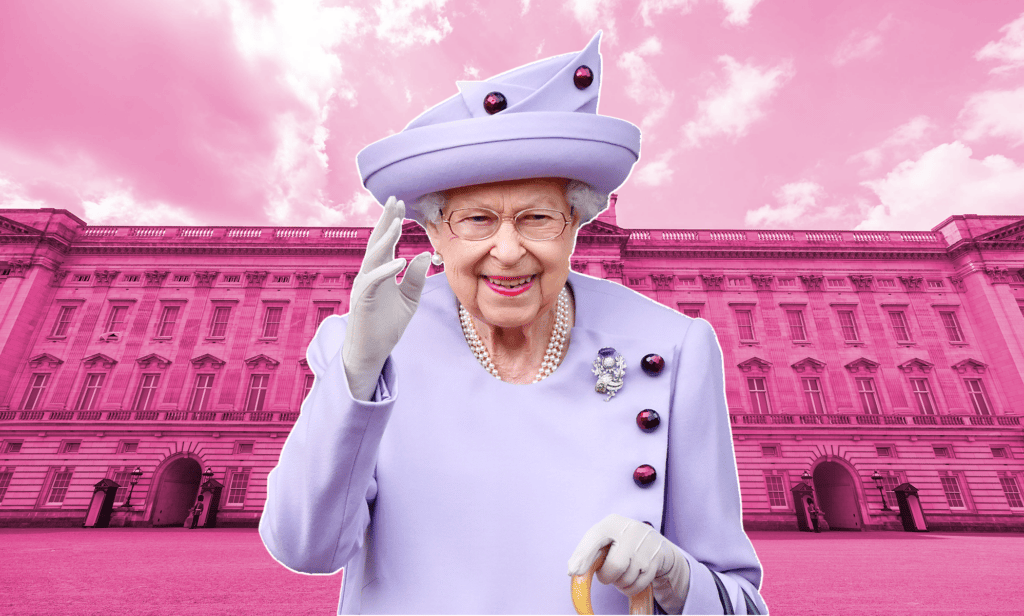Queen Elizabeth II has died aged 96. (Getty)
Queen Elizabeth II has died aged 96, bringing her 70 year reign to a close.
There was an outpouring of grief on Thursday (8 September) when it was confirmed the monarch had passed away.
Ever since she ascended to the throne following the death of her father King George VI, Queen Elizabeth II has set out her stall as a leader without any bias towards any political party, left or right wing. She has generally avoided making her own views known.
That includes her stance on LGBTQ+ rights. The queen has given royal assent to laws that have advanced LGBTQ+ equality in the UK, but she has never expressly stated any personal support for those changes.
People have spent years reading between the lines to figure out where Queen Elizabeth II stands on LGBTQ+ rights.
Royal assent, same-sex marriage and The Daily Mail
In 2017, speaking at the opening of parliament, the queen said her government would tackle “discrimination against people on the basis of their race, faith, gender, disability, or sexual orientation”.
That marked the first time the monarch had mentioned LGBTQ+ rights during a speech since 2003, when she told parliament her government would bring forward legislation to legalise civil partnerships.
In 2013, Queen Elizabeth II gave royal assent to the Marriage (Same Sex Couples) Bill, which paved the way for same-sex marriage to become a reality in England and Wales.
Royal assent doesn’t mean much in itself – it is effectively the monarch’s role to give their approval to legislation set out by parliament – but some took it as a sign that she was supportive of the move.
There was some controversy in 2016 when a source claiming to be close to the situation told the Daily Mail that the queen only gave her approval to same-sex marriage reluctantly.
“It was the ‘marriage’ thing that she thought was wrong, because marriage ought to be sacrosanct between a man and a woman,” the person, whose name was not published, said.
A source later told the The Daily Beast the Mail‘s story was “spurious and unsubstantiated” and questioned why a friend of the monarch would discuss the queen’s personal views with a tabloid newspaper.
The queen’s cousin came out as gay – but she didn’t attend his wedding
There was much fanfare in 2018 when Lord Ivar Mountbatten, a cousin of the queen, came out as gay and revealed he was due to marry his partner James Coyle.
In an interview with Tatler, Mountbatten said the royals “don’t really talk” about his marriage. His wedding was not attended by the inner circle of the royal family.
Before Mountbatten’s marriage, there were other comments people tried to read into.
In 2013, she endorsed a charter for the Commonwealth which stated: “We are implacably opposed to all form of discrimination. Whether rooted in gender, race, colour, creed, political belief or other grounds”.
There was also the scene in The Crown where Queen Elizabeth II, portrayed by Olivia Colman, referred to a gay man as a “friend of Dorothy”. The phrase, once commonly used to refer to gay men, may or may not have been used by the queen.
But that was most likely down to some artistic licence rather than any real historical fact.
The queen’s honours lists could also give an indication of where she stands. She has awarded a number of LGBTQ+ activists with OBEs over the years, but she has also honoured anti-trans campaigners – something that has worried LGBTQ+ activists.
Other members of the royal family have been somewhat more upfront in their support for LGBTQ+ rights – particularly Prince William and Prince Harry. In 2019, William said he would be supportive of any of his children if they were to come out as gay, while Prince Harry has shown his support for Mermaids, a trans youth charity.
Queen Elizabeth II kept her cards close to her chest on most issues throughout her life, and LGBTQ+ rights was no different. She remained impartial right up until the end of her life.
